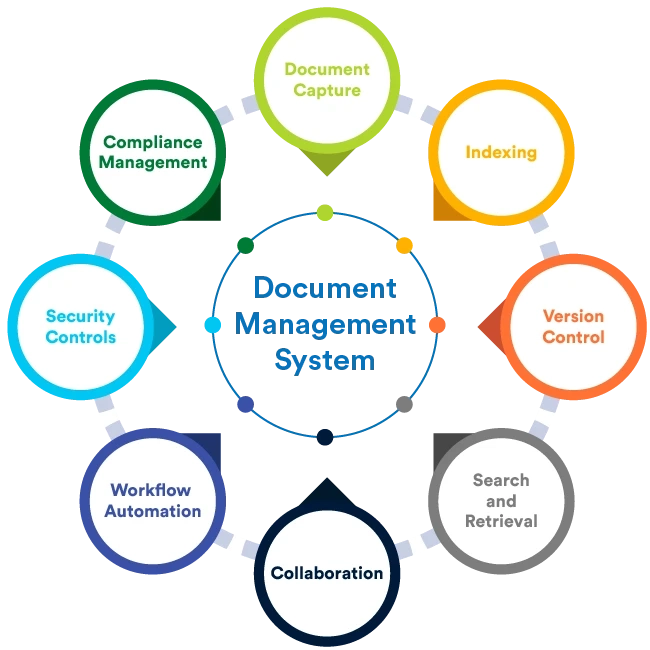In today's regulatory environment, companies across various industries are increasingly focused on ensuring compliance with stringent regulations. Effective Document Management is crucial in mitigating risks and maintaining adherence to these regulatory requirements. This blog explores the regulatory landscape, the role of document management in risk mitigation, and how leveraging advanced EDMS software and document control systems can enhance compliance and operational efficiency.
1. Understanding Regulatory Requirements
1.1 The Importance of Compliance
Compliance with regulatory requirements is essential to avoid legal penalties, protect organizational reputation, and ensure product quality and safety. Regulatory bodies set standards that companies must follow to operate legally and safely within their industries.
1.2 Common Regulatory Standards
Different industries face different regulations. For example:
Pharmaceuticals: Good Manufacturing Practice (GMP)Medical Devices: FDA 21 CFR Part 820Food and Beverage: HACCP2. The Role of Document Management in Compliance
2.1 What is Document Management?
Document management involves the systematic control of documents from creation through distribution and archival. An effective document management system (DMS) ensures that documents are accurate, accessible, and securely stored.
2.2 Regulatory Documentation Needs
Regulations often require specific documentation to demonstrate compliance. This includes:
Standard Operating Procedures (SOPs)Quality Assurance RecordsTraining Documentation3. Benefits of EDMS Software in Meeting Regulations
3.1 Centralized Document Storage
EDMS Software provides centralized storage for all documents, making it easier to manage and retrieve critical regulatory documents when needed.
3.2 Enhanced Security and Access Control
With document control software, organizations can ensure that only authorized personnel have access to sensitive information, protecting against data breaches and unauthorized alterations.
4. Key Features of Effective Document Management Systems
4.1 Version Control
Version control is essential to track changes and maintain accurate records of document revisions, ensuring that the most current version is always in use.
4.2 Audit Trails
Audit trails in document management systems provide a record of who accessed or modified a document, supporting traceability and accountability.
4.3 Automated Workflows
Automated workflows streamline document approval processes and ensure compliance with internal and external standards.
5. Document Control Software and Risk Mitigation
5.1 Reducing Human Error
Document Control Software minimizes the risk of human error by automating routine tasks, ensuring consistency, and reducing the likelihood of mistakes in documentation.
5.2 Ensuring Compliance with Standards
By maintaining accurate and up-to-date documentation, document control software helps organizations adhere to regulatory standards and avoid non-compliance issues.
6. Implementing an Effective Document Management Strategy
6.1 Choosing the Right EDMS Software
Select an EDMS software that aligns with your regulatory requirements and offers features such as robust security, version control, and integration capabilities.
6.2 Assessing Needs
Before implementing a Document Management System, assess your organization's specific needs, including regulatory requirements, document types, and workflow processes.
7. Case Studies: Document Management in Action
7.1 Pharmaceutical Industry Example
In the pharmaceutical industry, document management systems help track compliance with GMP regulations, ensuring that all production and quality control records are accurate and readily accessible.
7.2 Medical Device Industry Example
Medical device companies use document control software to manage design and manufacturing documentation, ensuring compliance with FDA regulations and reducing the risk of product recalls.
8. Future Trends in Document Management
8.1 Integration with Other Business Systems
The future of document management involves integration with other business systems, such as Enterprise Resource Planning (ERP) and Quality Management Systems (QMS), to streamline operations and enhance compliance.
8.2 Adoption of Artificial Intelligence
AI-driven document management solutions are expected to improve efficiency by automating complex tasks, analyzing data, and providing insights for better decision-making.
Conclusion
In 2024, effective document management remains a cornerstone of regulatory compliance and risk mitigation. ComplianceQuest Management Software stands out as a critical tool for businesses seeking to navigate complex regulatory landscapes. Its comprehensive features, including advanced document control capabilities, robust security measures, and integration options, make it an essential asset for maintaining compliance and enhancing operational efficiency.
By leveraging ComplianceQuest Management Software, organizations can ensure that their document management processes are both efficient and compliant, ultimately safeguarding their operations and reputation in a highly regulated world.


